Key Points and Summary – The U.S. made a massive strategic mistake by choosing the sleek F-35 over the “ugly” but brilliant Boeing X-32 in the Joint Strike Fighter competition.
-While unconventional in appearance, the X-32 was designed for simplicity, affordability, and manufacturing efficiency—qualities better suited for a long-term great power conflict.
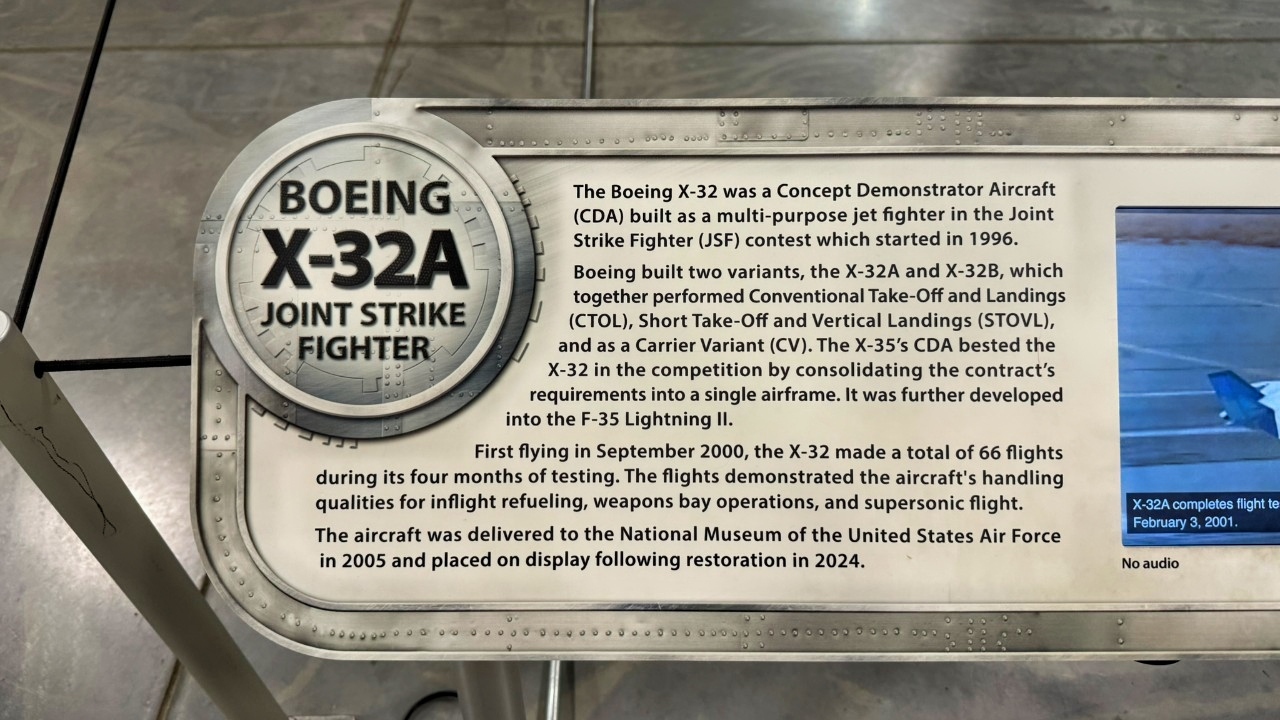
Boeing X-32 Fighter at USAF Museum July 2025. Image Credit: National Security Journal.
-In contrast, the F-35 has been plagued by sky-high costs and questionable survivability.
-The X-32 didn’t lose on merit but because it “didn’t flatter,” a victory of form over function that has left the U.S. with a less sustainable force.
The Boeing X-32 Was Better Than The F-35
“Appearances count for much; reality, for more.” So wrote Sun Tzu over two millennia ago, and never has the maxim been more cruelly inverted than in the Joint Strike Fighter (JSF) competition between Boeing’s X-32 and Lockheed Martin’s X-35.
The X-32, ungainly and unlovely by any aesthetic standard, looked like a cartoon jet. It was mocked, memed, and ultimately maligned into oblivion.
But beneath its bulbous chin and awkward silhouette was a machine of brute engineering brilliance—one that, for all its stylistic sins, met the program’s core requirements with a modular elegance and conceptual clarity that Lockheed’s sleeker X-35 could not match. In the world of industrial-age airpower, especially at the turn of the 21st century, function should have triumphed over form. The X-32 didn’t lose because it failed; it lost because it didn’t flatter.
The Stealth Fighter Beauty Contest?
What makes this particularly galling is that the JSF was never supposed to be a beauty contest. It was about meeting a brutally complex set of operational and logistical demands across three services, with the holy grail of stealth, speed, range, payload, and—most critically—affordability and maintainability baked into a single airframe.
Boeing’s approach was daringly honest: minimize parts, simplify production, and design a jet that could evolve into a sustainable workhorse for decades. This was no boutique stealth toy; it was an attempt to industrialize air dominance.
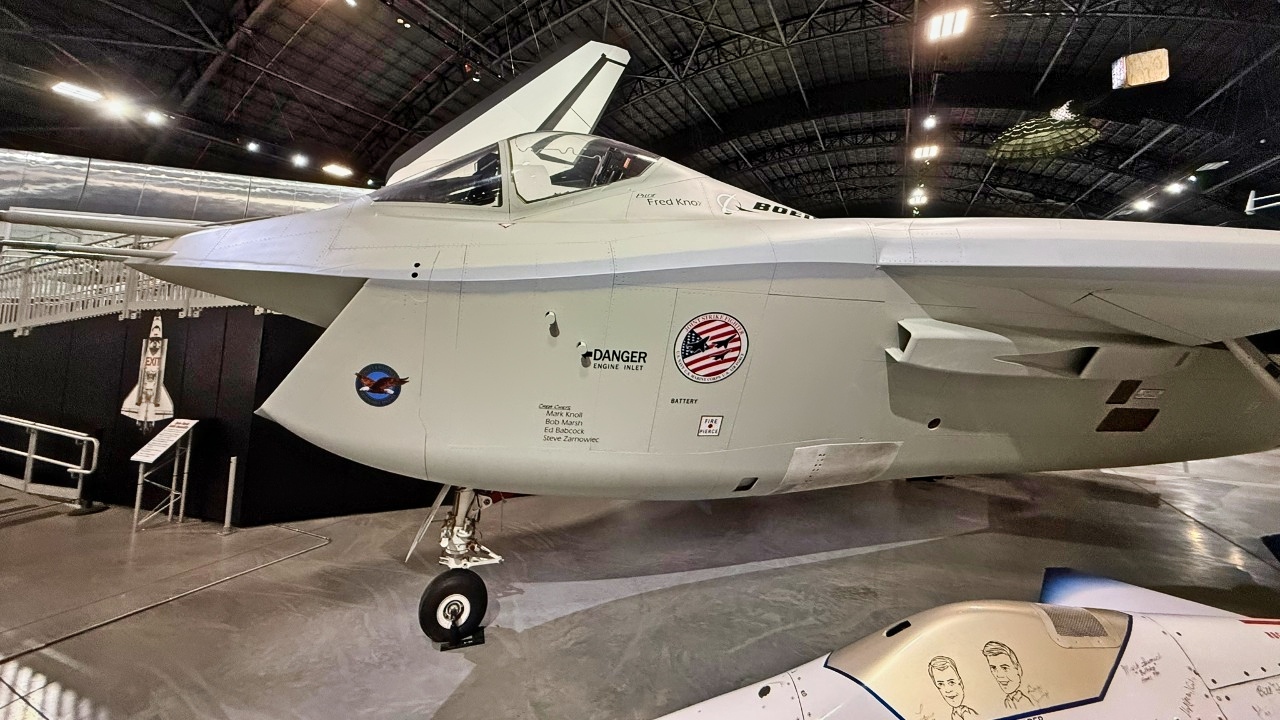
Boeing X-32 Fighter USAF Museum Dayton, Ohio. Image Credit: National Security Journal.
The X-32’s delta wing offered structural simplicity and generous internal fuel stores, and its one-piece carbon fiber composite fuselage was a masterclass in manufacturing efficiency. It flew with fewer moving parts, had a unified engine architecture across variants, and leaned into a philosophy of “design once, build forever.” These aren’t trivial attributes. They are precisely what the U.S. military has lacked in the post-Cold War era of gold-plated procurement follies.
By contrast, the X-35 won with a sleight of hand. Its separate lift-fan configuration for the short takeoff and vertical landing (STOVL) variant added complexity, weight, and future maintenance headaches—all the things the JSF was supposed to avoid. Its appearance echoed the aesthetic language of the F-22 Raptor, which made it photogenic and palatable to politicians. But it offered only the illusion of commonality: the three F-35 variants share only between 27% and 40% of their parts in common (the original goal was in the 70% to 90% range), and their service-specific performance compromises continue to plague operational effectiveness. Indeed, in 2025, two decades into production, the F-35 remains hobbled by sky-high sustainment costs, endless software delays, and growing doubts about its survivability in the very high-end fights it was meant to dominate. If the X-32 looked like the wrong answer, the X-35 is turning out to be the wrong solution.
Why the Boeing X-32 Really Lost
Let’s be honest. Boeing stumbled on one key test flight—the STOVL hover transition—and it was enough to fatally wound its campaign. But even that so-called “failure” was not a structural or systemic flaw.
Boeing had opted to demonstrate a simplified STOVL configuration to meet schedule requirements, with plans to integrate the desired system later fully. In other words, it chose engineering prudence over flashy optics.
That prudence was punished. And yet, in every other regard—from range and payload to signature reduction and cost projection—the X-32 was not only compliant but competitive. It was even praised for its unusually quiet acoustic profile and low infrared signature—key traits for survivability in modern sensor-rich battlefields. If the job of the JSF was to ensure persistent presence in contested zones without bankrupting the services, Boeing’s design was arguably better attuned to the aerial battlespace of the future.
Don’t Forget the YF-23 Black Widow II
The truth is, we’ve seen this story before. The YF-23 Black Widow II—arguably the finest air-dominance platform ever built—was passed over in favor of the flashier, better-lobbied F-22.

YF-23 National Security Journal Photo. Taken by Harry J. Kazianis at U.S. Air Force Museum on 7/19/2025.
That mistake, too, was based less on hard-nosed operational calculus than on bureaucratic politics and superficial impressions. The X-32’s loss follows that same tragic pattern: an aircraft that promised long-term strategic advantage was shelved because it didn’t play well on camera.

YF-23 Black Widow II Up Close National Security Journal Photo.
In both cases, the better aircraft lost, and the warfighter has paid the price in deferred capability, mounting costs, and a brittle supply chain ill-suited to great power conflict.
The Lessons We Must Learn
Today, as the Pentagon shifts its gaze toward sixth-generation platforms, including NGAD, and allied efforts like GCAP and FCAS, the lessons of the X-32 matter more than ever.
We are entering a world where contested logistics, electronic warfare, and attritional airpower will define outcomes—not just exquisite kill chains and manned-unmanned teaming.
The X-32’s design foresaw that. It anticipated modularity before it became a buzzword, efficiency before it became a mandate. It emphasized production scalability and system commonality in ways the F-35 only pretended to. In retrospect, it offered precisely the kind of architecture that could have kept costs low, sortie rates high, and allied export relationships unencumbered by endless proprietary hurdles.
What the Present Teaches Us
Indeed, in a world where peer competitors are once again testing America, we must ask whether we choose the fighter or the flyer. The F-35 flies, sure—but does it fight? Would the X-32 have fought more, fought longer, and fought cheaper? That’s not a theoretical question.
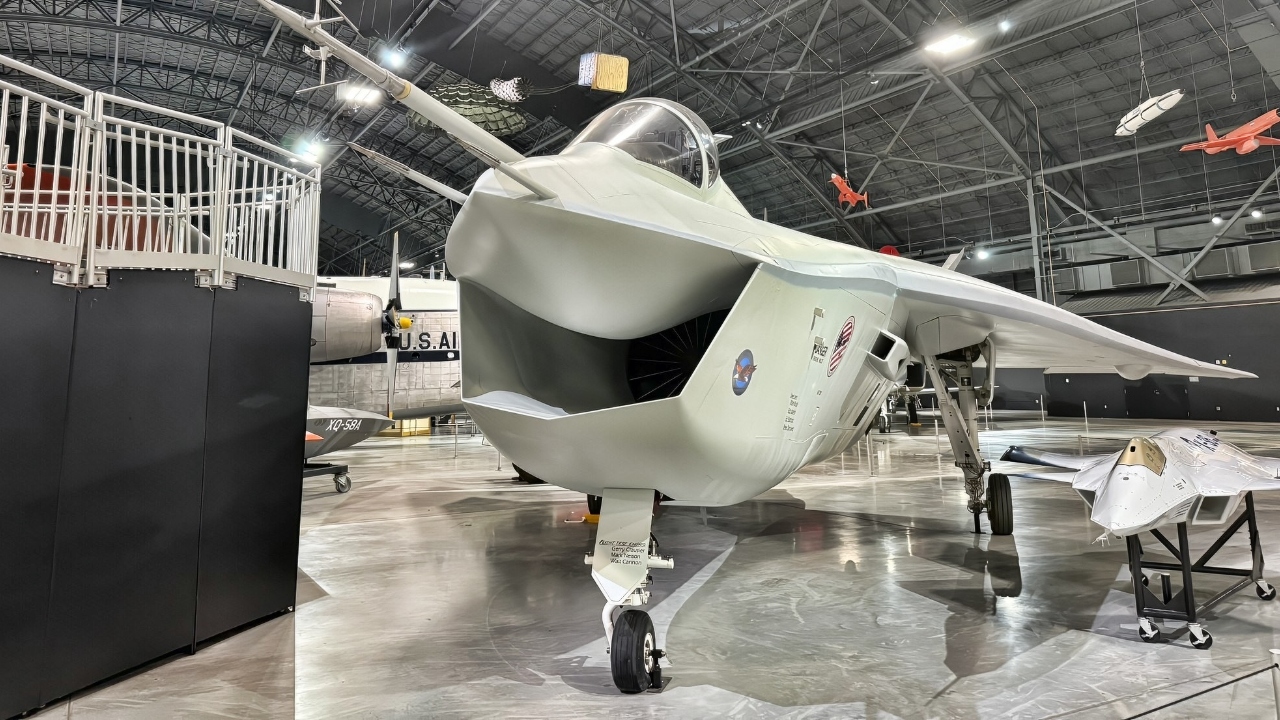
Boeing X-32 Bright Image 2025. Credit: National Security Journal.
The U.S. Navy has all but abandoned the F-35C in favor of upgraded Super Hornets and future NGAD variants. The Marine Corps struggles to afford enough STOVL F-35Bs to meet operational demand. And allies from Canada to Germany balk at the aircraft’s price tag and geopolitical strings.
Had the X-32 been selected, its simpler production and maintenance requirements might have fostered a more agile, exportable, and strategically autonomous ecosystem. It would not have dazzled air show crowds—but it would have met the fight, again and again.
The Flying Hammer vs. the Pretty Stealth Fighter
There’s a deeper point here, too—one that transcends procurement and speaks to America’s strategic culture. We remain addicted to appearances. Whether it’s platforms, allies, or strategic doctrines, we prefer the sleek illusion of dominance over the gritty, sustainable reality of power. The X-32 was never meant to be a flying symbol. It was meant to be a flying hammer—durable, repeatable, and unglamorous. That’s precisely why it should have won. In a more realist age, it might have.
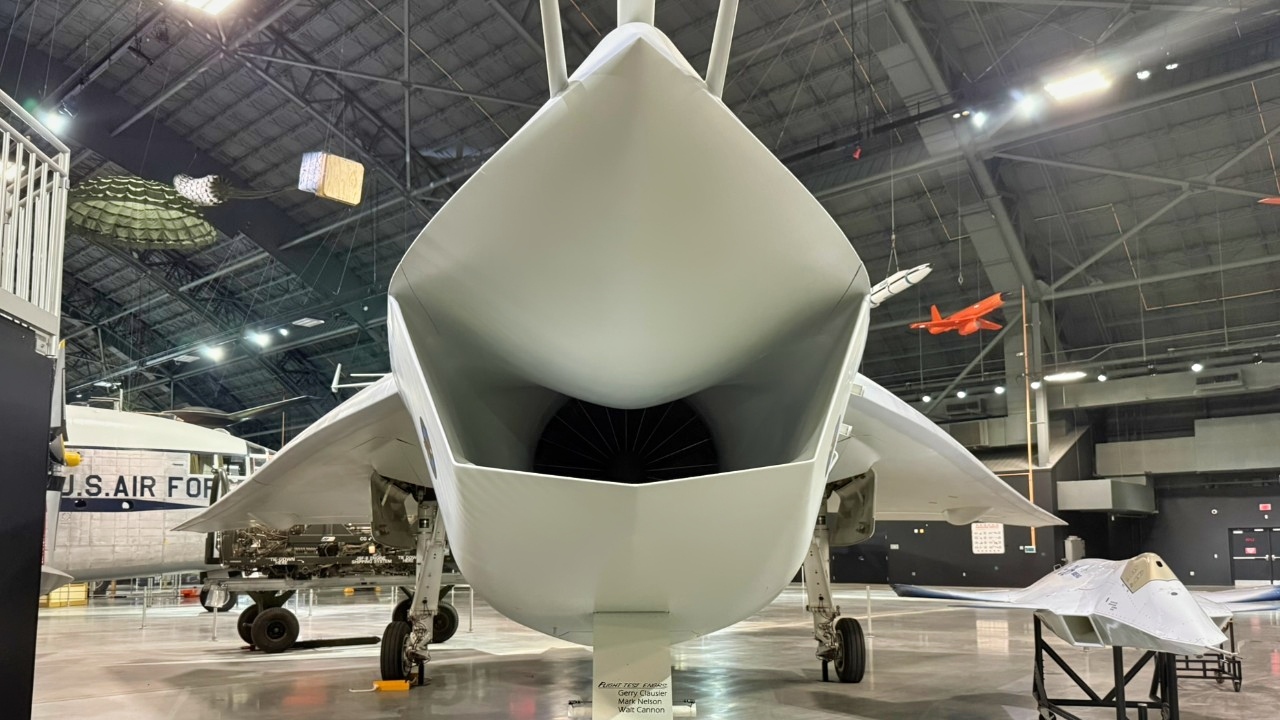
Head On Boeing X-32 Fighter. Image Credit: National Security Journal.
Of course, none of this is to claim that the X-32 was perfect. Its avionics suite was less mature than Lockheed’s. Its cockpit ergonomics required work. And yes, its looks were a PR nightmare.
But aircraft are not bought to be loved; they are bought to deter, to kill, and to survive. If the test is which machine offered the greatest long-term utility for the warfighter, the alliance network, and the American taxpayer, then Boeing’s ugly duckling was the better bet. It met the mission with fewer moving parts, lower life-cycle costs, and a production philosophy better suited to a protracted geopolitical rivalry with China and Russia. It understood the future of war, even if it failed to win the present contest.
The Boeing X-32 Shouldn’t Be in a Museum
In a more far-sighted U.S. procurement ecosystem, the X-32 would be flying today—not as a stealthy mascot of American vanity, but as the reliable, lethal, and cost-effective spearhead of a more pragmatic airpower strategy. True, it wasn’t a pretty aircraft, but it was the one best suited to the evolving battlespace.
That, in the end, is the lesson of the X-32—and one we ignore at our peril.
About the Author: Dr. Andrew Latham
Andrew Latham is a non-resident fellow at Defense Priorities and a professor of international relations and political theory at Macalester College in Saint Paul, MN. You can follow him on X: @aakatham. He writes a daily column for National Security Journal.
More Military
We Almost Touched the F-117 Stealth Fighter


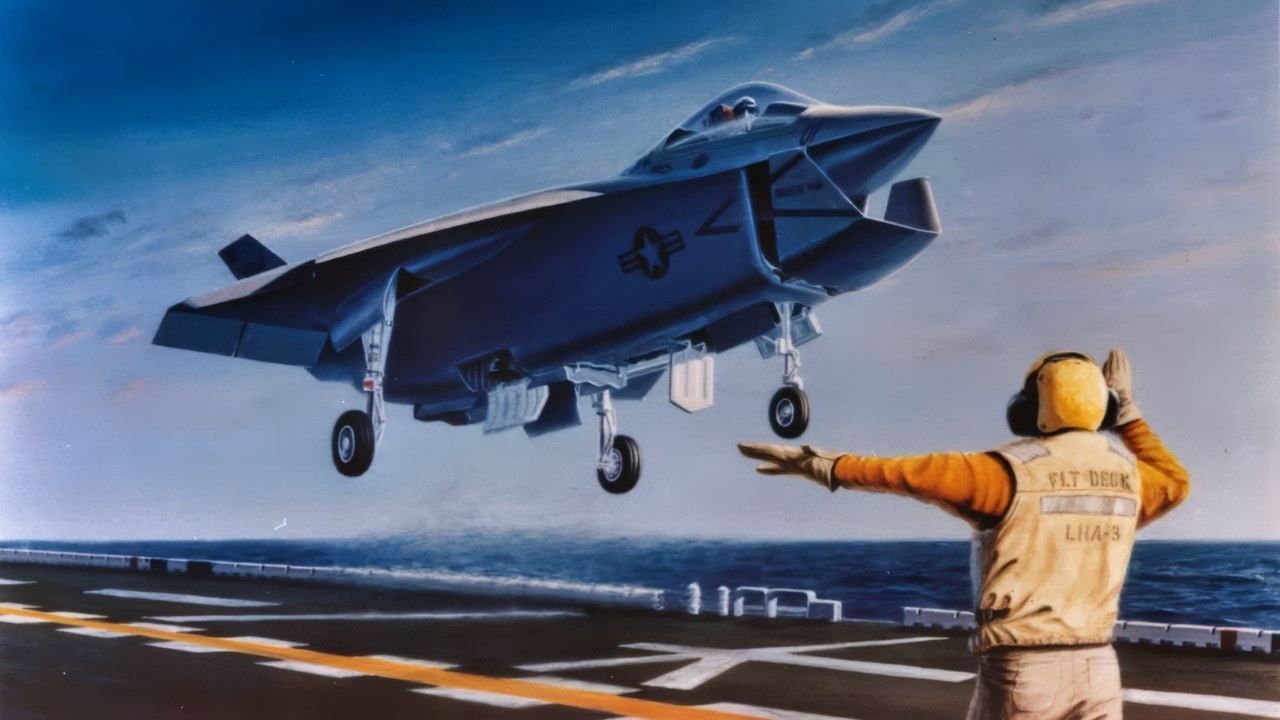








doyle-1
July 26, 2025 at 10:08 pm
Boeing needs to have the X-32 blueprints given straightaway to poland today as the polish republic is now very eager for war.
Latest news reports say polish leader donald tusk (no relation to trump) wants poland to be ready for war in 2027.
War in or by 2027 with russia.
Tusk reckons that by 2027, russia would be very sick and weak due to the ongoing non-stop mauling by the ukro nazis, and thus fully ripe for the picking.
Trouble is, the polish air force mostly have aircraft that are elderly compared to russian ones like the su-57 and su-34.
So, boeing needs to Let poland produced the X-32 and there by give the russian a good kick in the behind.
D-O-Y-L-E
July 27, 2025 at 7:50 am
Nobody in this world today can afford to be dumb, or act as if totally very totally so highly unaware of what’s going on (like the mass starvation in Gaza today).
Whether it’s X-32, X-35, F-47, F/A-XX, Tempest, FCAS, ngad or gcap, PCA, doesn’t matter; the big ‘operative word’ is nuclear. Remember it.
In the next war, or ww3, or the war now just sitting around the corner or just plain Armageddon, the prospective winner that emerges or going to emerge is the one who hurls the fastest nukes. As well as most number of nukes.
Today, politicians in Europe are simply EAGER BEAVER for war.All-out war. A war or clash of Titans.
Already the polish govt wants war now. War today, war tonight. War tomorrow early morning.
Why.
Because they’re dumb as aloizovitch once was.
Have they already forgotten the past wars and past holocausts. Romani holocaust, chinese holocaust, asian holocaust and some other big holocaust and today’s ongoing Gaza holocaust.
Therefore, Russia must use nukes today, now, against the nazis.
That will kick some sense into the euro warmongers and warlike hotheaded politicians of Europe.
It’s like slitting the throat of the chicken to scare the well-armed monkeys sitting nearby.
gsbeliever
July 27, 2025 at 10:59 am
All of these manned aircraft will soon be obsolete when the new generation of pilotless aircraft are developed. They’ll be capable of maneuvers that no human could withstand.
James T Helsper Jr
July 27, 2025 at 12:00 pm
The JSF competition was all about the US Marines. They needed a Harrier replacement. The Navy got their F-18E/F and the Air Force had the F-15E. The only advantage the JSF had was stealth. Boeing bet on a single piece wing, a single vertical fin and aircraft architecture that placed the engine at the CG like the Harrier. They also tried to convince the Air Force that their lower cost was valid as opposed to the agreed to cost models.
The F-23 suffered from two flaws compared to the F-22; fuselage masking of weapons and asymmetric thrust in single engine operations.
Steven S Smith
July 27, 2025 at 1:09 pm
Disappointed in this article. A decision made in 2001 is now being arm chaired quarterbacked by a journalist. Also reinforcing the jouralist’s argument of deficiencies with blatant conjecture.
Vetmike
July 27, 2025 at 5:35 pm
It is and never has been about which piece of gear or aircraft or warship is better for the mission or is easier to maintain. It is about how much graft or pork can be shifted over to someone’s brother in law. From the very first day of our militaries, congress demanded and got their cut.
Francis Ojeba
July 27, 2025 at 9:48 pm
USAF and the PENTAGON is not the Russian Airpower, Neither, the People’s Liberation Airpower Of ” Beijing “, to be effective in the production of highly capable Airpower!
Why? Because, non implementation of the ” X32 and Y23″ Aircrafts production and utility of theirs potentials, is the reasons why the Russian Space Forces is unmatched by the American Standards!
The Chinese Space Forces had also- outpaced and now an existent to threat to to be the this world’s sole dominant super power nation!
Solution: The Pentagon should deign it theirs responsibility and America’s vital interest to re activate the X32 and Y23 programs into actual reality of the dream of ” President. Donald Trump of making America Great, again!”
Those, aircrafts are better off in hands of the Japanese Self Defense Forces! They knew it’s axiom or value; to provide theirs blueprints for it’s reproduction into today’s contentions of the- Area Access Denial Zones of the South China Sea debacle!
SomeoneSomewhere
July 28, 2025 at 5:53 am
Nice try, buddy.
Zazu
July 28, 2025 at 1:17 pm
The F-35 is the least operationally capable fighter ever produced. With a combat readiness rate that hovers in the high 20 to low 30 percent range, it’s a huge monument to government special interest lobbying and bureaucratic corruption. At one point, they even contracted Boeing to attempt to fix several problems with the life support system.
Spam
July 28, 2025 at 9:31 pm
As co-lead of the team charged with assessing the pilot and maintainer interface aspects of the two competing JSF proposals, and whose signature was on the airworthiness release for both the X-32 and X-35, I refute almost every claim made in this article. The CDA (concept demo aircraft, X planes) were only a SMALL PART of the source selection strategy, and there was accordingly no “fly off”. The bulk of the proposal evaluations we performed in CY 99/2000 centered on the Production Weapons System Concept (PWSC) design concepts, their supporting rationale, and any plans submitted to further mature their designs to meet government requirements. Neither vendors fully met all requirements or were rated “green/low risk” for cost, risk, or technical qualities. Yet, the Boeing PWSC design was fairly rated, I contend, especially considering the volume and criticality of serious PVI/MVI non compliances we logged, compared to the Lockheed PWSC design. One example: Boeing contended that their daily servicing and weps access points met the spec, yet had failed to account for their height above deck when the jet was fully fueled and the nose strut uncompressed (18 inches further up), leaving 80 percent of the access points unreachable by mechanics. Boeing Seattle management compounded their shortcoming by falsely claiming to me in front of the Supportability IPT lead that they’d had a Boeing St Louis (McDonnell) expert working the area (not knowing that I’d called and chatted with him two days before).
Real engineers, test pilots and maintainers (unlike PhDs teaching international relations at small colleges without even a school of engineering) have to make value- and evidence-based assessments using real engineering and test results. We don’t quarterback twenty years after the fact based on little more than personal opinion. These government source selections were fairly run by the JSPO, with the absolute best results for the taxpayer and warfighter we could produce at the time.
/Spam sends, out.